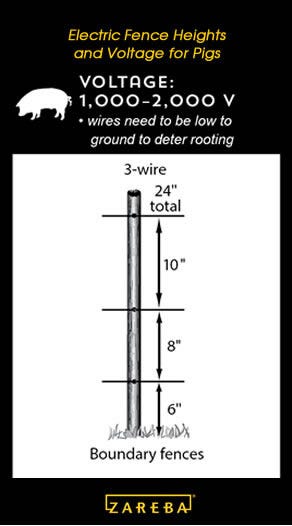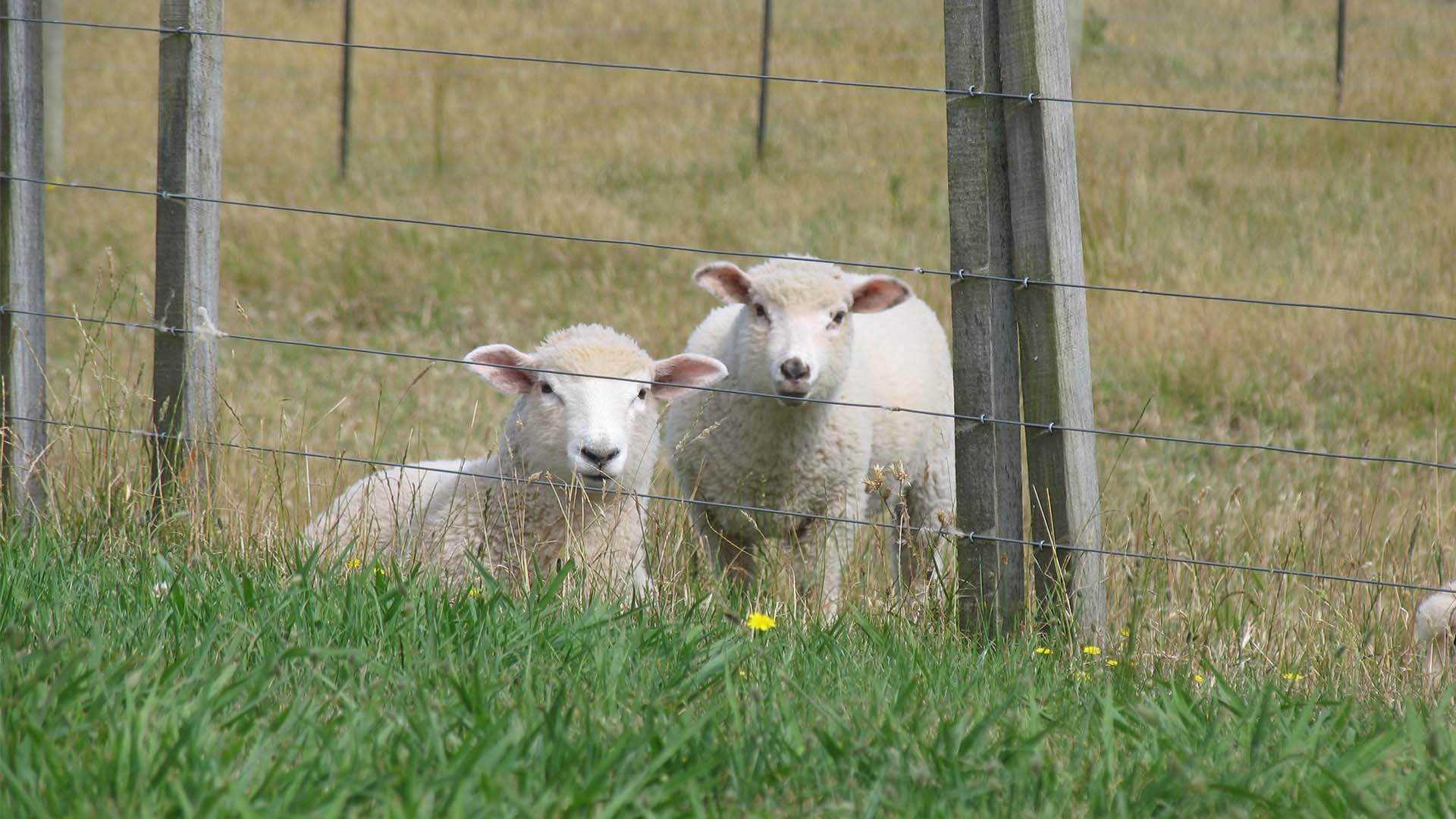
The installation height of an electric fence and the number of lines used varies a great deal depending on the animal being contained inside it. Installers must account for the animal’s size, feeding habits, intelligence, activity level and coat length.
If a rancher needs to contain a bull, for example, it’s best to install six lines. The first one starts at a mere 6 inches off the ground and the top wire is suspended 42 inches above the ground.
If you’re running an electric fence to contain poultry, it’s another matter altogether though.
These differences are important since a fence built for one animal may be ineffective for other species.
Basic Guide for Electric Fence Wire Count and Height
How do you know the best electric fence option for your livestock? Each type of livestock has its own requirements based on several factors, including:
- Shoulder height: The primary rule is that the top wire of an electric fence should reach up to the animal’s shoulder, limiting their ability to leap over the fence.
- Feeding style: Consider how the animal feeds – you want wires low enough to keep it from trying to reach under the fence to graze. If it does, its head could get entangled by a fence wire.
- Intelligence: The animal’s intelligence is another factor in electronic containment – smart animals usually only need to be corrected once or twice to learn to avoid a fence. Other animals will constantly test the fence, having either forgotten about the shock potential or simply because they’re stubborn.
- Activity: Highly active animals usually need a fence with more wires, often to provide a physical barrier to remind them which areas are off limits. Livestock with strong reproductive drives may require more lines to separate them from potential mates.
- Coat: Finally, animals with thick coats may require more lines to provide more points of contact with the fence. This increases the conductivity and boosts the delivery potential of corrective shocks.
Beef Cattle
A number of fence set-ups are required for beef cattle, each with their own measurements based on specific conditions.
- 3 wires – Cross fencing (20”, 30”, 40”)
- 3 wires – Mature Cattle (20”, 30”, 40”)
- 4 wires – Young Cattle (16”, 26”, 36” 46”)
- 5 wires – Cattle plus predator threat (6”, 12”, 20”, 30”, 40”)
- 5 wires – Feedlot (12”, 22”, 32”, 42”, 52”)
- 6 wires – Cattle, perimeter (6”, 12”, 18”, 24”, 32”, 42”)

Dairy Cows
More docile than beef cattle, dairy cows have slightly less restrictive fencing requirements.
- 1 wire – Cross fencing (40”)
- 3 wires – Mature Dairy Cow (20”, 30”, 40”)
- 4 wires – Young Dairy Cow (16”, 26”, 36” 46”)
- 5 wires – Dairy Cow plus predator threat (6”, 12”, 20”, 30”, 40”)
- 5 wires – Feedlot (12”, 22”, 32”, 42”, 52”)
- 6 wires – Dairy Cow, perimeter (6”, 12”, 18”, 24”, 32”, 42”)
Horses
Strong, fast and intelligent, horses respond well to electric fencing, especially to fence lines with significant visual profiles, such as poly tape.
- 1 wire – Cross fencing (40”)
- 3 wires – Mature Horses (20”, 30”, 40”)
- 4 wires – Young Horses (16”, 26”, 36” 46”)
- 5 wires – Horses, perimeter (12”, 22”, 32”, 42”, 52”)

Sheep & Goats
Sheep, with their thick coats of wool, and goats, due to their stubborn nature, require multiple lines.
- 6 wires -- Goat, tall fence (6”, 12”, 18”, 24”, 32”, 42”)
- 5 wires -- Goat, all purpose (6”, 12”, 20”, 30”, 40”)
- 4 wires -- Sheep (8”, 16”, 24” 32”)


Pigs
A low body profile and limited activity levels mean that pigs require limited fencing coverage.
- 3 wires – Pigs in general (6”, 14”, 24”)
Poultry
Despite their ability to fly, poultry – chickens and turkeys, in particular – can be contained with a relatively short fence. An exterior fence is strongly recommended to keep predators out.
- 2 wires – Chickens and turkeys (6”, 10”)
Your Livestock Fence
Are you working on an electric fence for your animals? Tell us all about it in the comments below or send us pictures of your progress the next time you visit Zareba® Systems on Facebook. We would love to see how it’s coming along!
If you’re looking for more information on electric fence supplies, subscribe to the Zareba® Systems E-Newsletter for regular links to articles like this one and announcements on new products.



